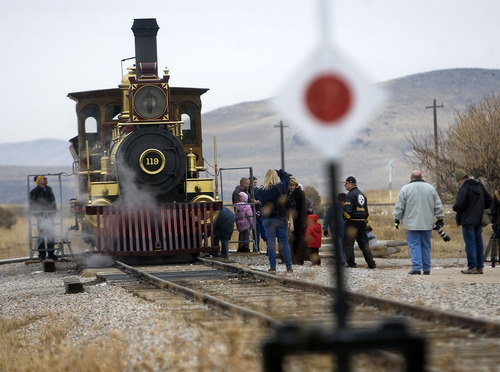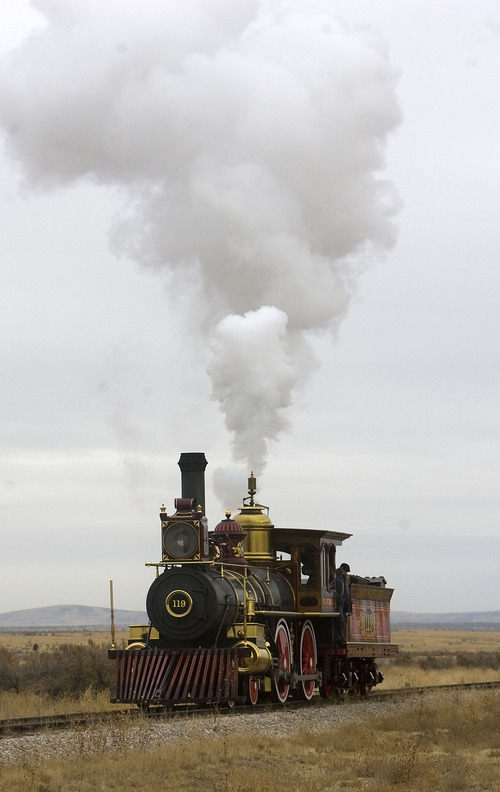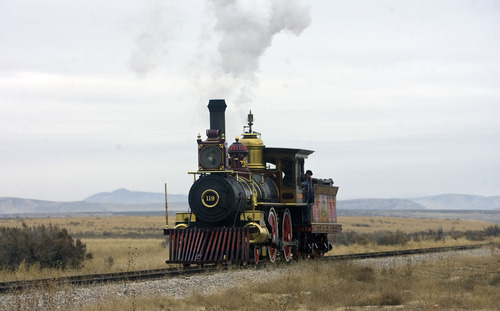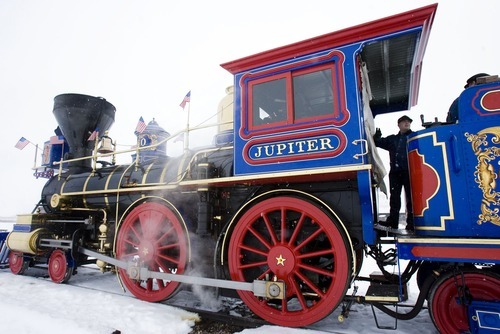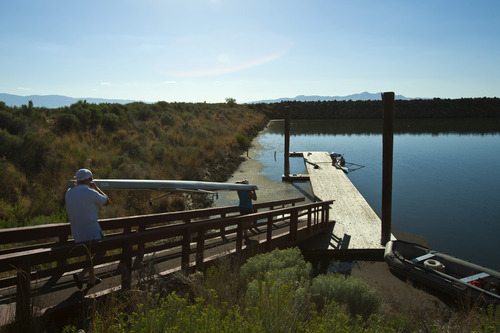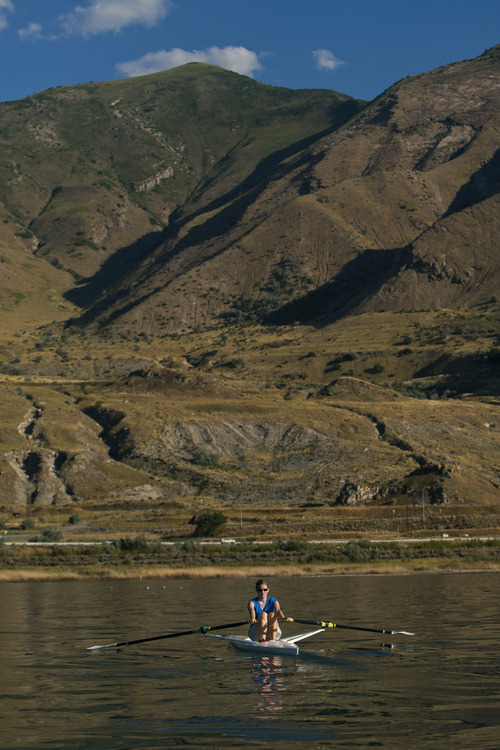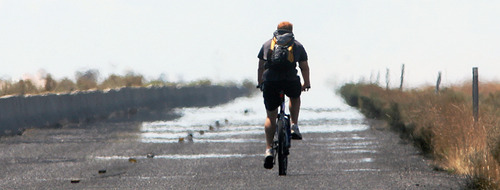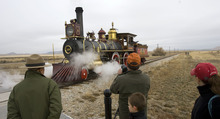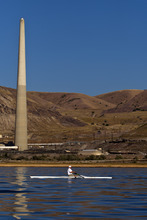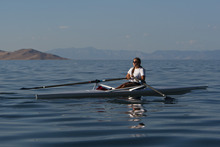This is an archived article that was published on sltrib.com in 2012, and information in the article may be outdated. It is provided only for personal research purposes and may not be reprinted.
Steve Mayer fell in love with the Wasatch Front's majestic mountain range when he moved to Salt Lake City for its world-renowned skiing in 1991. Ten years into his stay he fell in love with the Great Salt Lake.
"Everyone said there's nothing to do there," Mayer said. 'It stinks,' they said. 'It's gross.' So even through I was a water-and-lake person, I never went. Then I went to Antelope Island. I was blown away, but still never saw anyone recreating on it."
Feeling curious, he flew above the lake's shoreline using a motorized paraglider. Then, starting at the Great Salt Lake Marina, he took a paddle-board out toward the lake's center.
The smell was gone. So were the insects. Surrounded by the confluence of desert air, mountains and the mesmeric lull of lukewarm, saline water beneath his board, he felt a deep serenity.
"It's hard to explain," Mayer, owner of an extreme sporting goods store in Draper, said. "It's magical. I've been on lots of lakes around the world, but nothing compared to it."
The Great Salt Lake holds the unique distinction of being both the namesake of the state's capital and arguably its most ignored, oft-derided geographic landmark.
When you grow up here, you hear stories about the draw of the turn-of-the-20th century Saltair resort, considered the Coney Island of the West. You've likely seen the historical photos of City fathers and their wives, dressed in whole-body swim suits and bloomers.
Maybe you've heard stories about how the resort in the 1940s boasted of the world's largest dance floor, featuring touring bands such as Glenn Miller's, and rides that threw resort-goers out over the lake water.
Fires and floods took their toll. By 1962, the cult film "Carnival of Souls" depicted Saltair as a ghost-infested relic. Fast-foward decades to the 1970s and 1980s, and the lake served as the backdrop for a reluctant tourist trap, complete with trolley car gift shops selling saltwater taffy to station wagons of families who walked through waves of brine flies to dip their feet in a mucky shore, then rushed for the shower faucet.
Now young fans flock to punk concerts and raves at the airplane hanger-turned-music hall. When it comes to weekend recreation, it's simply no contest. Far more people head east toward the mountains than west toward the Great Salt Lake.
The secret to enjoying our state's largest body of water, salt and all, fans say, is learning to enjoy it on its own terms. The Great Salt Lake may not charm you outright. But, like a complex boyfriend or girlfriend, the more time you spend with it, the more you fall in love.
Here, then, are five ways to enjoy the lake that most of us ignore unless we're driving by on our way to someplace else.
—
Boating and rowing • The Great Salt Lake's rowing tradition stretches back to the 1890s, when Utahns made boats from paper shells, then shellacked them to make them watertight.
Founded on those traditions, the Great Salt Lake Rowing Club hosts a monthly Moon-Light Row on the Friday nearest a full moon, and regularly scheduled 1,500-meter Brine Shrimp Sprints.
The challenge is rigging your boat higher to compensate for the salty water, says club president Michael Spackman. "It's an undiscovered treasure out here, but we don't want to say that for fear of jet skiers and motor boats. All we have to worry about out here is the brine shrimp," he jokes.
Meanwhile, Dave Ghizzone of Gonzo Boat Rentals, hopes to have his boat-rental business up and running at the north end of Antelope Island by mid-August. Pairing a day out on the lake with lunch or dinner at the nearby Island Buffalo Grill, on the west side of the island, is a great undiscovered getaway, he said. Early spring and late fall are ideal excursion times. "That's when the lake is cooler and brine shrimp are mature enough to eat the algae. There are places where you can see 12-feet straight down into the water because it's so clean and crystal clear," Ghizzone said.
—
Spiral Jetty and Golden Spike National Historic Site • Considering the nearly three-hour trip and more than 100 miles to get there, it's easy to say that only art freaks or railroad aficionados need sign up for this trip. Refuse either one, though, and you're missing out on two of the lake's biggest nearby draws.
On the lake's northeastern shore is Robert Smithson's massive Spiral Jetty. Created in 1970 from black basalt boulders arranged just above the lake's water, it's widely considered one of the world's premiere works of environmental art.
Discovering whether it's available for viewing, or otherwise submerged, is one of the great slow-motion spectator sports of the art world. At last report, it remains submerged, but that's contingent on the current heat wave. The work is so iconic that Westminster College's Great Salt Lake Institute, the Utah Museum of Fine Arts and the New York-based Dia Foundation all share a kind of joint custody over its future.
History and train buffs can drink in the Golden Spike National Historic Site, which commemorates the spot in 1869 that the Central Pacific and Union Pacific rails where joined by, you guessed it, the "golden spike." The site features its own bookstore, historic films, and two fully functional locomotives identical to the original engines.
The two sites together are a mere 16 miles apart, which makes it either practical to see both, or foolish to ignore one for the other. Natalie Barrow, a bookstore employee with the Western National Parks Association at Golden Spike, said the historic site still gets more inquiries from railroad fans, but more than enough calls asking if the Spiral Jetty is viewable for a trip.
"Most people who come to see one or the other don't realize they're so close to another key attraction," Barrow said. "It's good that at least some people visit both, otherwise we wouldn't get reports about whether the Jetty's visible or not."
—
Bird-watching • For your neighborhood ornithologist, it's no secret that the shores and environs of the Great Salt Lake provide one of the biggest pit-stops in all migratory traffic. What the common nature enthusiast may not know is that it's not all about seagulls.
"We get thousands of Tundra swans that come through every fall by the end of October," said Lester Talbot, a retired high-school science teacher who leads field trips for the Wasatch Audubon Society. "They stay as long as there's open water for them. They're just beautiful birds."
The spring migration is no less spectacular, full of unusual birds such as the Red Knot, Ruddy Turnstone, Whimbrel and Prothonotary Warbler among the usual mass of shore birds and water foul such as the Snow Goose. The traffic moves both ways, with birds stopping by the lake during spring before they fly north to nest, then returning for fall before heading south. Some birds like it so much they stay all year long. Bird-watching hot spots include the Antelope Island Causeway, Bear River Migratory Bird Refuge near Brigham City.
Pack a lunch, fill your thermos, and look into purchasing a good set of binoculars and a spotting scope. For best viewing, choose a cool day for a scope power that can go beyond a 45 power range without the sight of heat waves disturbing your view.
—
Biking • The flat, hard surfaces surrounding the lake are legendary for speed. That's why speed freaks and hot-rodders adore the Bonneville Salt Flats in Tooele County, and why it's environment for beating land-speed records is ideal. What holds true for alcohol-fueled piston engines also holds true for the bicycling enthusiast.
The bicyclists' advantage is that they don't need to schlep their hardware all that far to find a decent place to round. Paths abound almost anywhere in near or around the lake, from the Great Salt Lake Marina on north to Antelope Island Causeway.
Davis County's department of Community and Economic Development hosts an annual "Antelope by Moonlight" in early July, a noncompetitive, 22-mile ride to the island's Fielding Garr Ranch. All that's required, apart from a registration fee, is a working headlight, reflectors, and helmet, and a nocturnal spirit that moves by pedal.
—
Just hang out, beach-side • The northeast shoreline, just off Exit 11, was a haven for nudists until a spate of police busts in the late 1990s put an end to the shore's brief naturist craze. The exit has been closed from public access for years.
No matter. We now have Antelope Island State Park, just 7 miles west of I-15 North off exit 332. It offers what's easily the lake's best, beach-side experience.
The stretch of beach is only about one mile long, but with rest rooms, showers and picnic spaces, it's a great place to launch a kite, fly a miniature plane, or just park the car for a shore-side stroll. Like Mayer, you could drink it in after a day of paddle-boarding.
"You can make the case that most of the lake lacks a beach, or what you might call that quintessential 'day-at-the-beach' feeling," Mayer said. "But it can exist. You've just got to be a little creative."
Twitter:@Artsalt
Facebook.com/nowsaltlake —
Background: Great Salt Lake
Rowing and sculling • Visit http://www.gslr.org for information.
Spiral Jetty and Golden Spike National Historic Site • For background on the Spiral Jetty, visit author Hikmet Loe's website at http://www.hikmetsidneyloe.com/the-spiral-jetty.html, which is regularly updated and includes a link to USGS for Great Salt Lake water levels.
Golden Spike National Historic Site • Is located at 6450 6400 N. Road, Corinne. For information, call 435-471-2209 and ask for extenstion 5 or 9.
Bird-watching hot spots • Birders cite the Antelope Island Causeway and Bear River Migratory Bird Refuge near Brigham City. For bird-watching information, visit http://www.utah.com/wildlife/bird_watching.htm or http://www.fws.gov/bearriver.
Antelope Island State Park • Admission is $9 per vehicle ($4 per vehicle for Utah residents age 62 and over). Call 801-773-2941 for the entrance gate or 801-725-9263 for the visitor center.



